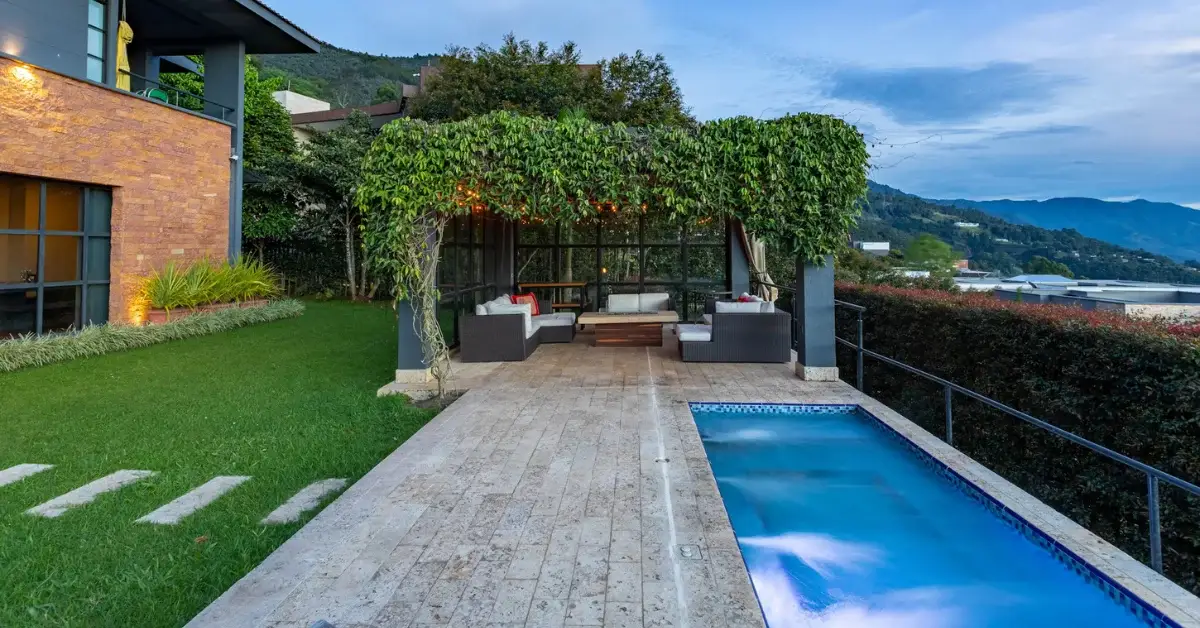Understanding Different Pool Surfaces and Their Lifespan

When it comes to designing or renovating a swimming pool, the surface finish is one of the most critical decisions a homeowner can make.
More than just a visual detail, the pool surface determines the feel of the water, the level of required maintenance, and how long the pool will maintain its appearance and structure. Selecting the proper surface involves weighing price, longevity, visual attractiveness, and weather factors.
From sleek tiles to textured pebbles, every pool finish comes with its own set of strengths and considerations. Whether you’re diving into a full renovation or exploring new pool construction, understanding the differences between surface materials can help you make a smart, lasting investment.
Let’s break down the most common pool finishes and what to expect from each in terms of lifespan, maintenance, and long-term value.
Plaster: Traditional and Cost-Effective
Plaster, typically made from a mix of white cement and marble dust, has long been a go-to option for inground pools. It’s known for its smooth surface and clean, bright appearance, often giving water a classic light blue hue. One of its main attractions is affordability—plaster is generally less expensive upfront compared to more durable finishes.
However, this savings comes with trade-offs. Plaster typically has a shorter life, often lasting 5 to 10 years depending on water conditions and how well you care for it.
It’s also more likely to get stained and worn down gradually, particularly in places with strong sunlight or tough water situations. Still, with proper care and occasional resurfacing, plaster can remain a viable option for budget-conscious homeowners.
Quartz: Enhanced Aesthetics and Strength
Quartz finishes combine white plaster with crushed quartz and sometimes color tints, creating a shimmering effect that elevates both durability and visual appeal. This blend adds strength to the surface, making it more resistant to etching, chemical damage, and fading.
Quartz surfaces usually last between 10 to 15 years with good maintenance, offering a nice balance between cost and performance.
Their polished appearance makes them a favorite among homeowners who want something a bit more eye-catching than plain plaster without stepping into premium-price territory. In warmer climates with year-round pool use, the added resilience of quartz can make a noticeable difference.
Pebble: Texture Meets Durability
Pebble finishes have grown increasingly popular for their natural look and exceptional longevity. Composed of small, smooth river pebbles bound together in cement, this surface offers an earthy aesthetic that blends beautifully with surrounding landscapes. It’s also highly durable, often lasting 15 to 20 years or more.
Because pebble finishes are rougher than plaster or quartz, they can be a bit more textured underfoot—something to consider if children or sensitive swimmers will use the pool frequently.
However, the trade-off is excellent stain resistance, color variety, and minimal maintenance requirements. They pair particularly well with surrounding features like turf installation, where visual harmony and ease of care are key design goals.
Tile: Timeless Elegance and Maximum Lifespan
For those seeking a luxurious finish that will stand the test of time, tile is the premium choice. Available in ceramic, porcelain, or glass, tiles allow for infinite design possibilities—from intricate mosaics to sleek, minimalist lines. Their smooth, sealed surface makes them very good at fighting off algae, stains, and chemical harm.
Tile finishes can last well over 20 years, often outlasting the pool structure itself when properly installed. While the cost of materials and labor is significantly higher, the long-term benefits in appearance and maintenance make tile an excellent investment.
Especially in upscale new pool construction, tile can serve as a centerpiece feature that adds significant value to the property.
Vinyl Liners: Budget-Friendly and Replaceable
Vinyl pool liners are a common choice for above-ground and some inground pools. They’re fairly cheap to put in and offer many different designs and color choices. Vinyl is also smooth to the touch, making it comfortable for swimmers.
But vinyl liners usually must be changed every 7 to 10 years and can be easily damaged by holes and rips. For homeowners who are okay with periodic liner replacement and want more flexibility in design, vinyl can still be a cost-effective solution—especially when paired with protective landscaping and controlled usage.
Extending the Lifespan of Your Pool Surface
Regardless of which finish you choose, proper maintenance is key to extending its lifespan. Regular brushing, chemical balancing, and surface inspections can prevent issues before they escalate. Investing in an automatic cleaner or hiring a pool maintenance professional can make upkeep easier and more consistent.
Climate also plays a role. In regions with intense sun exposure, surface materials are subject to more wear and discoloration. Using pool covers, adding shaded structures, and scheduling seasonal check-ups can all contribute to longevity.
Pairing your pool with durable landscaping elements, like pavers or turf installation, also reduces the amount of debris and wear your surface will face over time.
Final Thoughts: Choose Smart, Plan Ahead
Choosing a pool surface isn’t just about aesthetics—it’s about functionality, long-term value, and lifestyle compatibility. All materials have advantages and disadvantages, and the right choice for one homeowner may not be ideal for another.
The key is to consider how you plan to use your pool, the surrounding environment, and how much time and money you’re willing to invest in maintenance.
If you’re building your first pool or improving one you already have, knowing your choices will help you decide wisely. With the right surface and care plan, your pool will provide beauty, comfort, and enjoyment for years to come.
